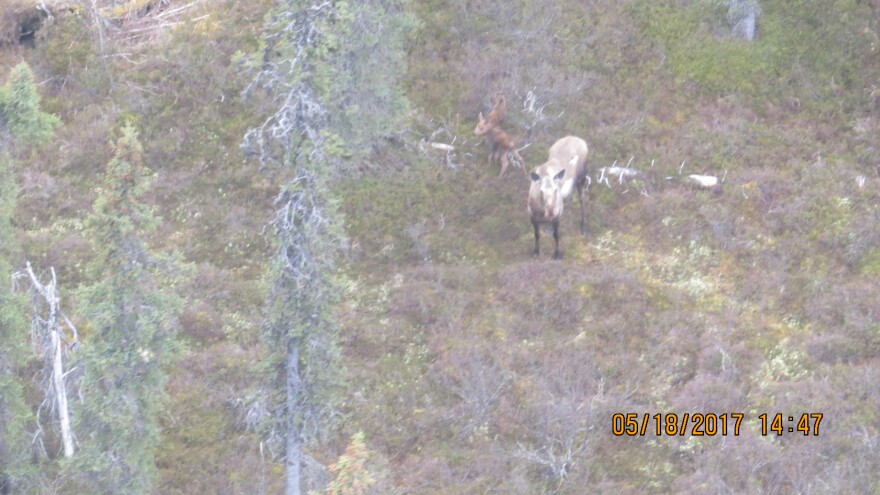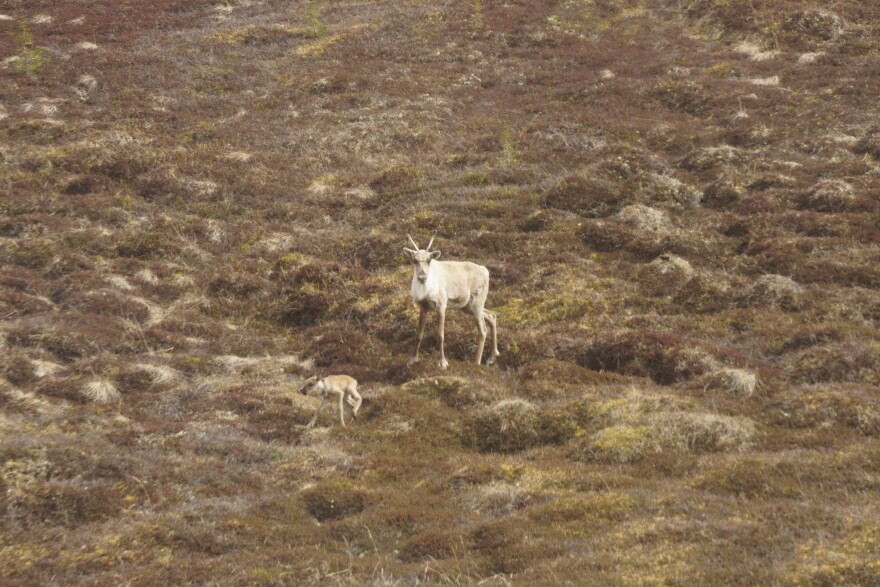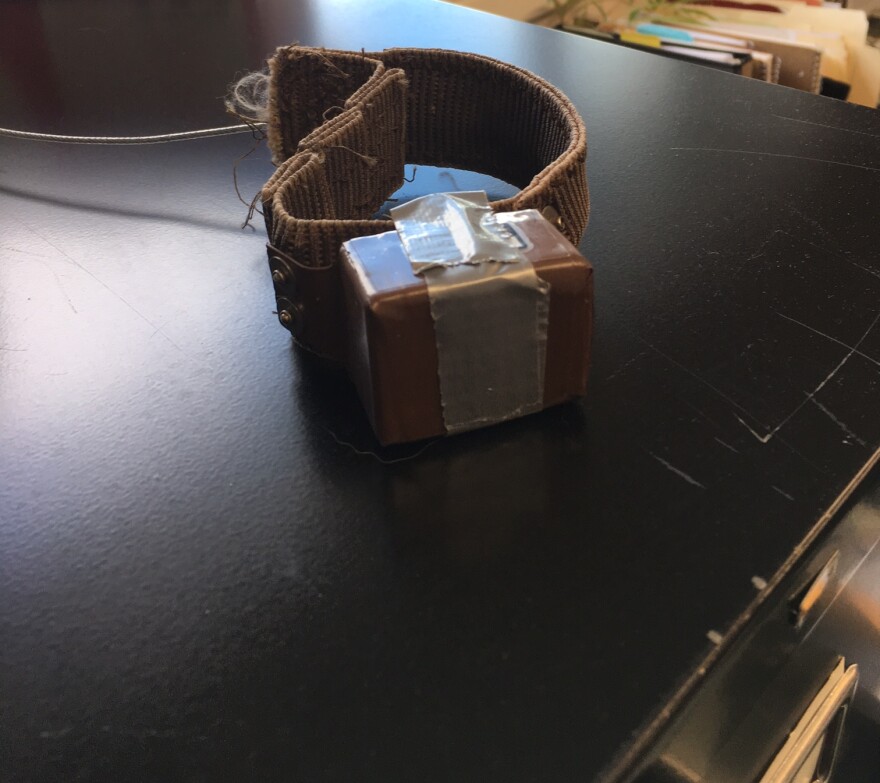ADF&G in Dillingham tracked moose and caribou calves around the area 17 game management units. Biologists say 60% of the original moose calves are gone, many likely taken by predators.
Fish and Game's Dillingham wildlife biologist Neil Barten has been flying extensive surveys over the past few weeks to check the birth and survival rates of moose and caribou. Tracking down his collared animals around western Bristol Bay, Barten estimates only forty percent of the moose calves studied survived this “predator heavy system.” KDLG’s Allison Mollenkamp spoke with him for more details.
Audio Transcript: Neil Barten knows a lot about moose. He and his colleagues spent the spring tracking them, along with the area caribou population. They put radio collars on 35 moose cows and a total of 60 caribou calves. They were then able to track the radio signals from a plane.
Barten says the survey was initially fueled by concern for the moose population.
“In the last couple of years our twinning survey data indicated there was a lot of female moose that were not with calves at a time when I was expecting them to have calves. So I was like ‘What’s going on with that?’ And then last fall we did a composition survey in late November early December and we didn’t see as many calves with the adult moose as we had hoped to.”
What they found this time was more hopeful. Of the 35 moose they tracked, thirty-four 34 were pregnant and they eventually saw 31 with calves. Seventy percent of the cows had twins. Barten and his colleagues were surprised by the distance covered by some of the cows.
“Some of the cows move 60, 70 miles to get to where they had a calf. I mean, they just up and move. And, you know, twenty-four hours after they move they’d have calves, which is pretty cool. You know most of the cows didn’t move that far. We even had them, we had some stay completely put, had calves where they’d been all spring. But most of them moved some distance.”

Once the calves are born they can often be seen with their mothers from the plane. However, not all survive. Barten estimates that about 60 percent of the calves they saw are gone. For the moose it’s difficult to know what happened to the calves. For the caribou it’s easier because the calves themselves are wearing the radio collars. The collars signal when a calf hasn’t moved in a while.
“If this one’s giving out a mortality signal we get there with a helicopter and we look to see if it was a bear, a wolf, or an eagle, or a wolverine or what have you. Most of the mortality we detected was between brown bears, wolves, and some golden eagles as best we could determine.”
Barten says there are radio collars available with on-board cameras that could help determine the cause of death. Those collars, however, are more expensive. ADF&G will continue to track the moose and caribou for several more months.
Contact the author at allison@kdlg.org or (907) 842-5281.




